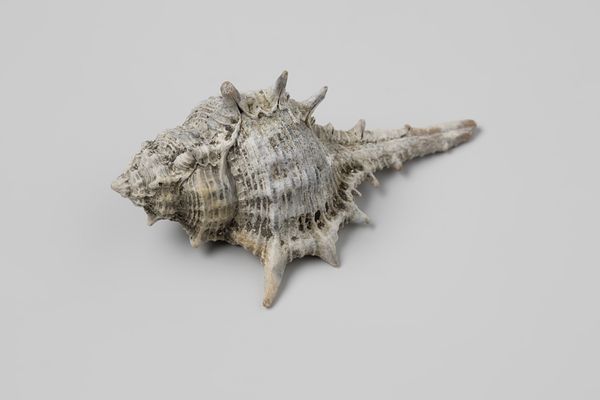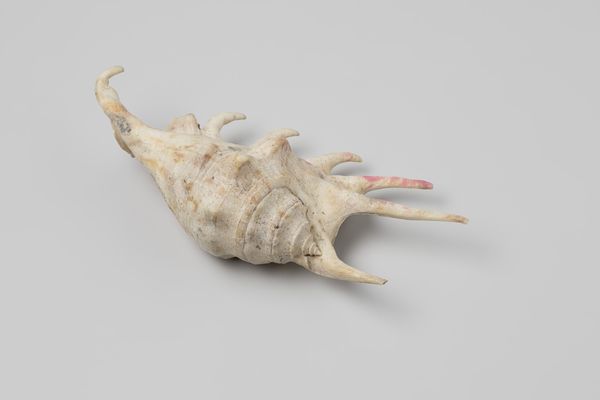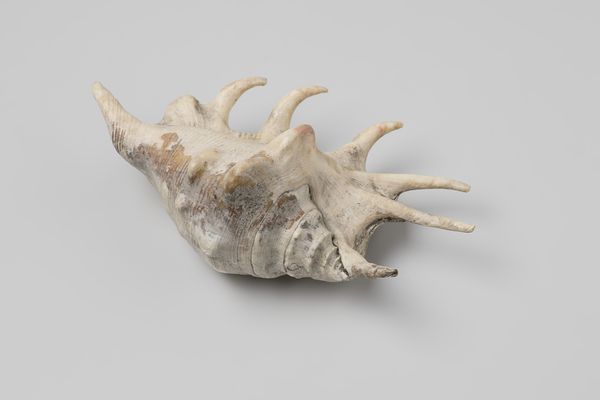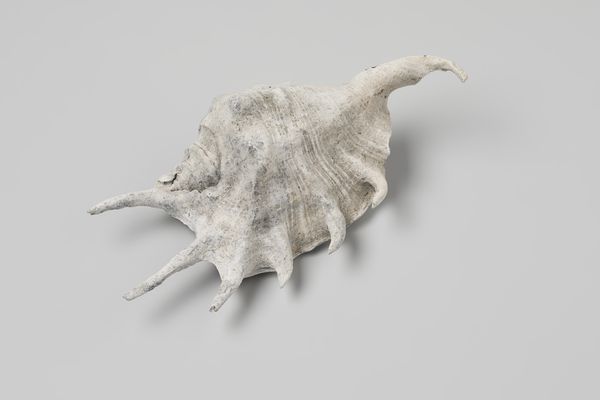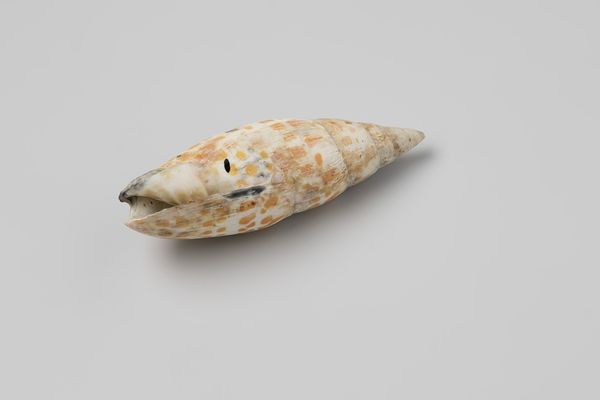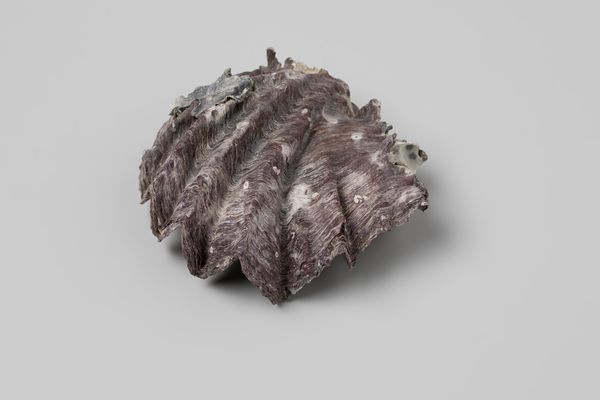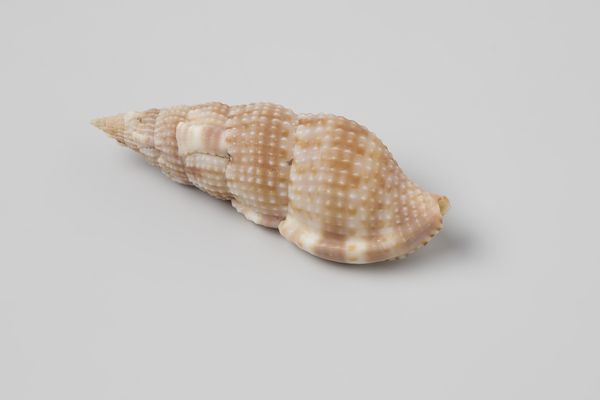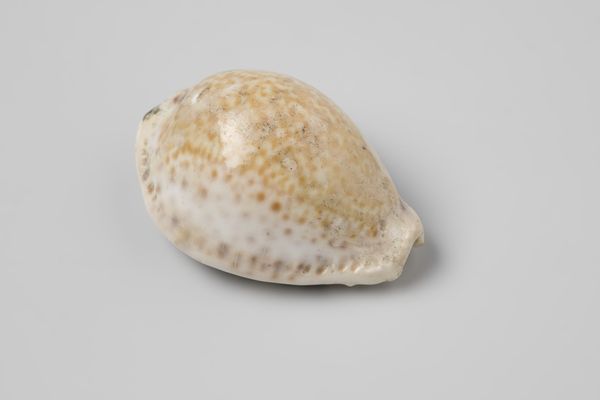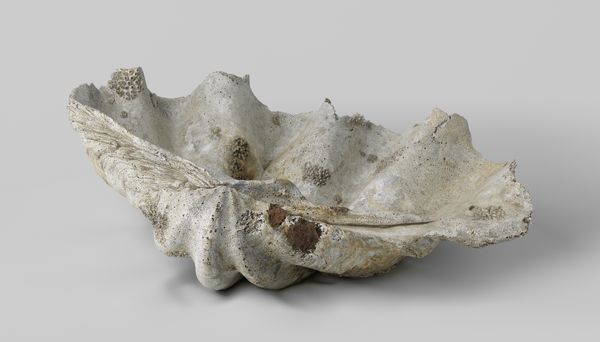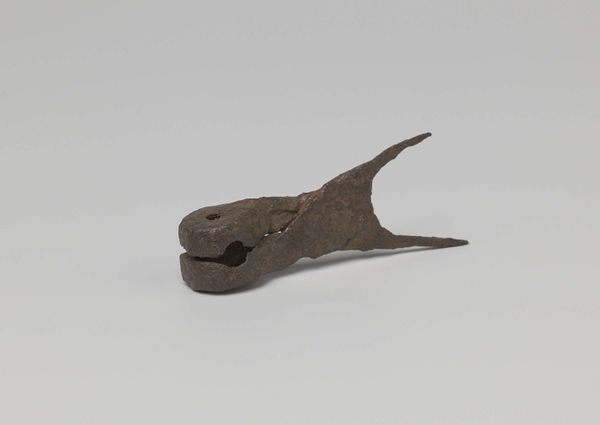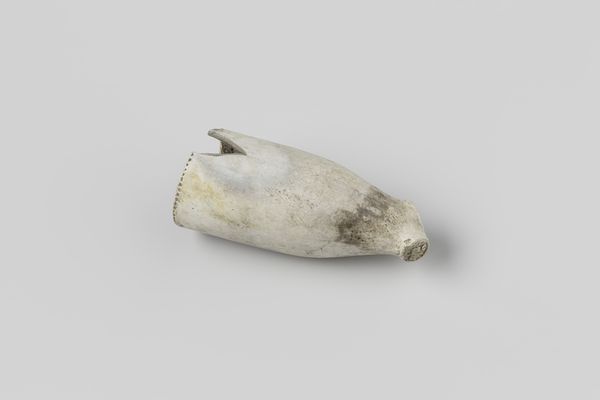
Lambis lambis shell from the wreck of the Dutch East India ship Witte Leeuw before 1613
0:00
0:00
nietvantoepassing
Rijksmuseum
photography
#
photography
Dimensions: length 11.0 cm, width 5.8 cm, height 4 cm
Copyright: Rijks Museum: Open Domain
Curator: Here we have a photographic representation of a Lambis lambis shell, recovered from the wreck of the Dutch East India ship, the Witte Leeuw. This object predates 1613 and now resides in the collection of the Rijksmuseum. Editor: It's ghostly, isn't it? Like a bleached memory washed ashore. All those muted greys, and the stark presentation... you can almost smell the salt and seaweed, and feel the weight of history bearing down. Curator: Indeed. The monochromatic palette emphasizes the formal qualities of the shell itself. Consider the spiraling volutes, how they delineate space. Observe, too, the rhythmic protrusions along its outer edge; note their precise distribution around its circumference. It functions, essentially, as an elegant expression of logarithmic growth, materialized. Editor: Logarithmic growth... sounds so… sterile. For me, it's a miniature landscape. Those protuberances are like little islands or sea stacks eroded by relentless waves. You know, places that bear witness to epic voyages, perhaps a ship going down with a belly full of treasures, exotic spices, dreams of fortune… or, as the photo reminds us, all returning to sea and ruin, the end point and transformation for dreams of wealth. Curator: While I appreciate the evocative narrative, I find that meaning originates primarily in the composition. The photographer's studied arrangement focuses attention squarely upon the interplay between light and shadow across the textured surface of the shell. Each ridge and hollow contributes a carefully orchestrated tonal shift. Editor: But isn’t there a paradox there, a relic so intimately connected with its watery origins, displayed now, high and dry? Does the sterile precision of this style of photography embalm the mystery, or amplify it? Curator: Embalm? On the contrary. The clarity here permits us to closely study not merely form, but its ontological relation with function. We come face to face with something beautiful from far out at sea and a world of trade at an early point in time, when many mysteries were alive and trade to Asia full of potential, excitement, danger and death! Editor: Absolutely, yes. What survives? A twist in time made visible to us. Something ancient yet startlingly present. You're right: stark but with that direct vision of experience we long for, always!
Comments
No comments
Be the first to comment and join the conversation on the ultimate creative platform.
